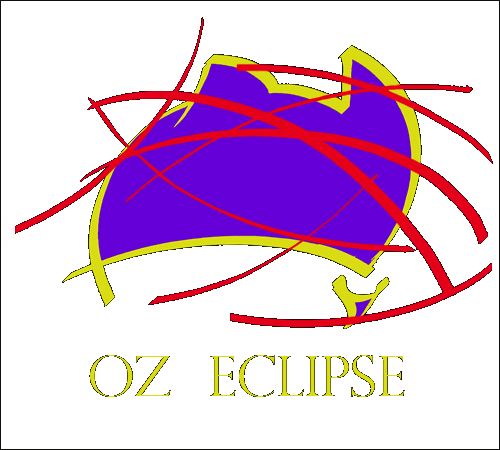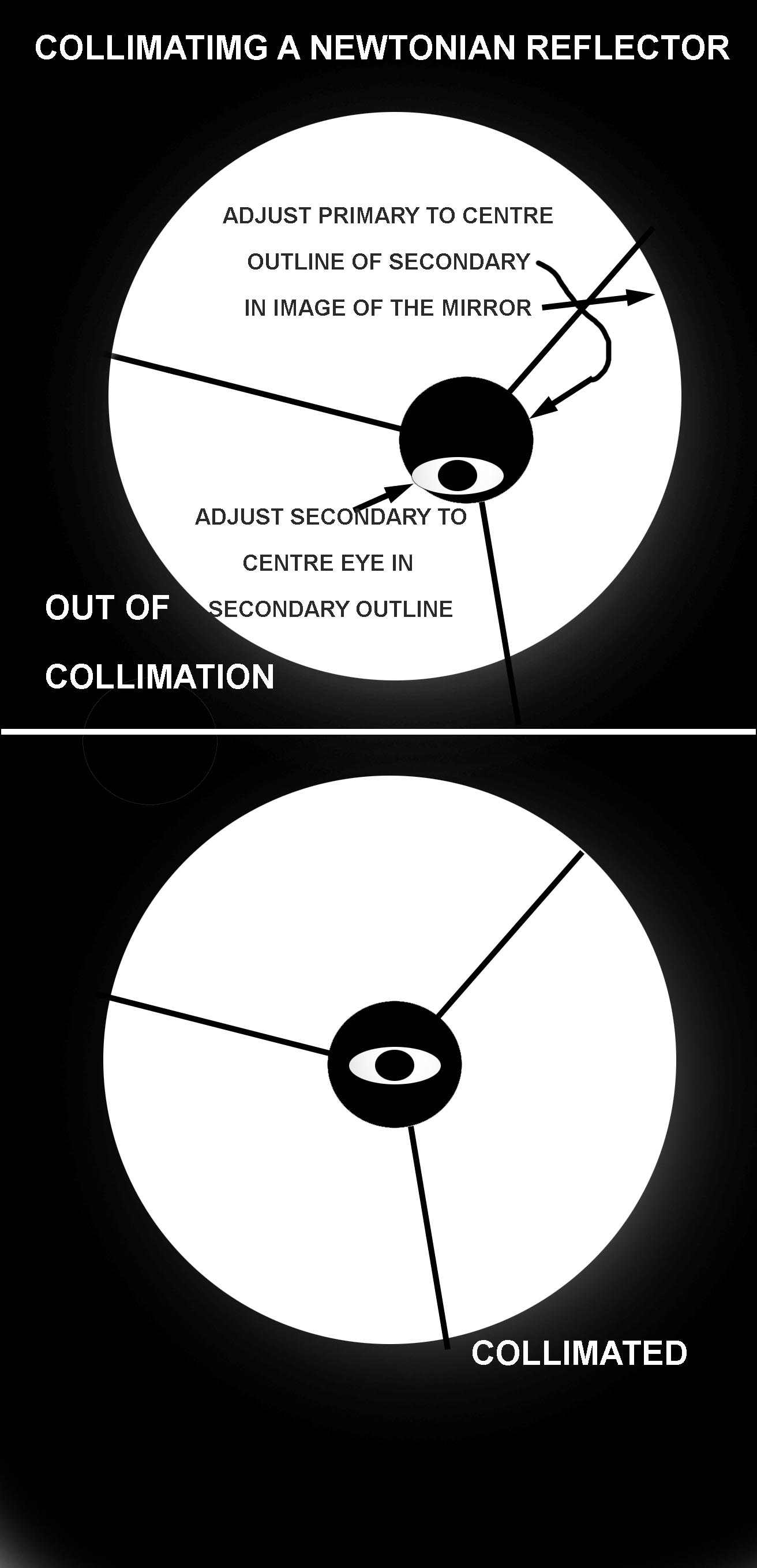
 |
WAITING FOR THE
SHADOW
Astronomical Observing and Photography |
| PHOTOGRAPHY | ECLIPSES | ASTRONOMY | HOME PAGE |
ADJUSTING THE SECONDARY MIRROR 1. First adjust the small screws on the back of the smaller diagonal mirror until you can see the whole of the big mirror centred in the diagonal mirror. You should also be able to see your eye centred in that small mirror. ADJUSTING THE PRIMARY MIRROR 2. Adjust the screws on the back of the big rear mirror until the silhouette of the small mirror is centred over the big mirror. Some mirror cells have three screws with springs to keep the tension. Better designed cells, have three pairs of what are called push pull screws to move the mirror. In each pair, one screw pulls the mirror holded toward the rear plate, the other pushes against this. They are a little more time consuming to adjust. The pull screw needs to be loosened before the push screw can be adjusted. When the adjustment is complete, tighten the push screw carefully until they are tight. Push-pull mirror cells don't lose their collimation as often as spring loaded cells. 3. If the scope is way out of collimation, you may need to cycle through steps 1 & 2 more than once. 4. Check the diagonal again and make any minor adjustments to centre the image of the big mirror and your eyes reflection. This should only be necessary if the collimation was way out at the first step. 5. Make sure any lock nuts on adjusting threads are tightened to prevent slippage or loss of collimation. |
 |
| PHOTOGRAPHY | ECLIPSES | ASTRONOMY | HOME PAGE |